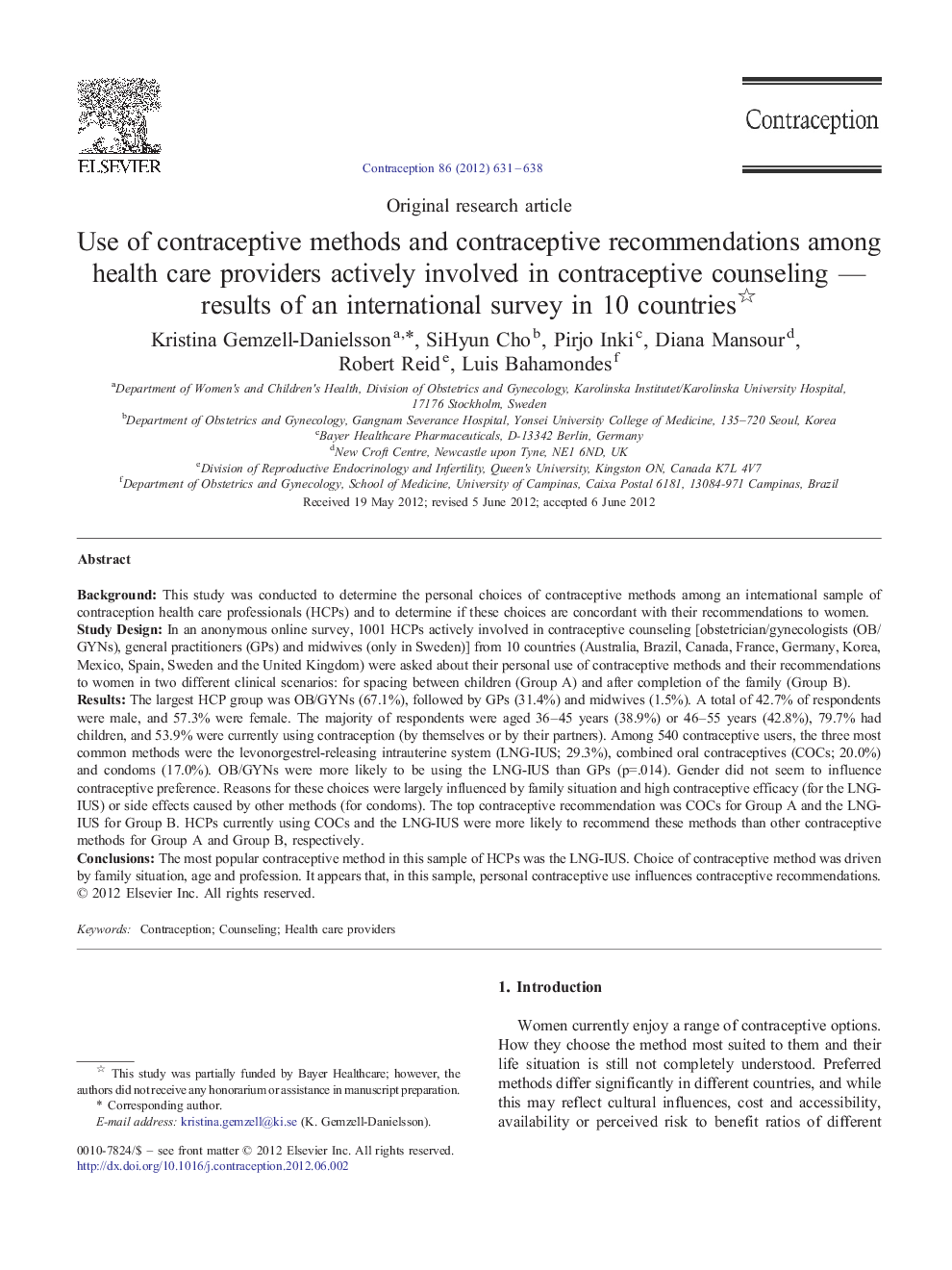| کد مقاله | کد نشریه | سال انتشار | مقاله انگلیسی | نسخه تمام متن |
|---|---|---|---|---|
| 6171513 | 1251435 | 2012 | 8 صفحه PDF | دانلود رایگان |

BackgroundThis study was conducted to determine the personal choices of contraceptive methods among an international sample of contraception health care professionals (HCPs) and to determine if these choices are concordant with their recommendations to women.Study DesignIn an anonymous online survey, 1001 HCPs actively involved in contraceptive counseling [obstetrician/gynecologists (OB/GYNs), general practitioners (GPs) and midwives (only in Sweden)] from 10 countries (Australia, Brazil, Canada, France, Germany, Korea, Mexico, Spain, Sweden and the United Kingdom) were asked about their personal use of contraceptive methods and their recommendations to women in two different clinical scenarios: for spacing between children (Group A) and after completion of the family (Group B).ResultsThe largest HCP group was OB/GYNs (67.1%), followed by GPs (31.4%) and midwives (1.5%). A total of 42.7% of respondents were male, and 57.3% were female. The majority of respondents were aged 36-45 years (38.9%) or 46-55 years (42.8%), 79.7% had children, and 53.9% were currently using contraception (by themselves or by their partners). Among 540 contraceptive users, the three most common methods were the levonorgestrel-releasing intrauterine system (LNG-IUS; 29.3%), combined oral contraceptives (COCs; 20.0%) and condoms (17.0%). OB/GYNs were more likely to be using the LNG-IUS than GPs (p=.014). Gender did not seem to influence contraceptive preference. Reasons for these choices were largely influenced by family situation and high contraceptive efficacy (for the LNG-IUS) or side effects caused by other methods (for condoms). The top contraceptive recommendation was COCs for Group A and the LNG-IUS for Group B. HCPs currently using COCs and the LNG-IUS were more likely to recommend these methods than other contraceptive methods for Group A and Group B, respectively.ConclusionsThe most popular contraceptive method in this sample of HCPs was the LNG-IUS. Choice of contraceptive method was driven by family situation, age and profession. It appears that, in this sample, personal contraceptive use influences contraceptive recommendations.
Journal: Contraception - Volume 86, Issue 6, December 2012, Pages 631-638